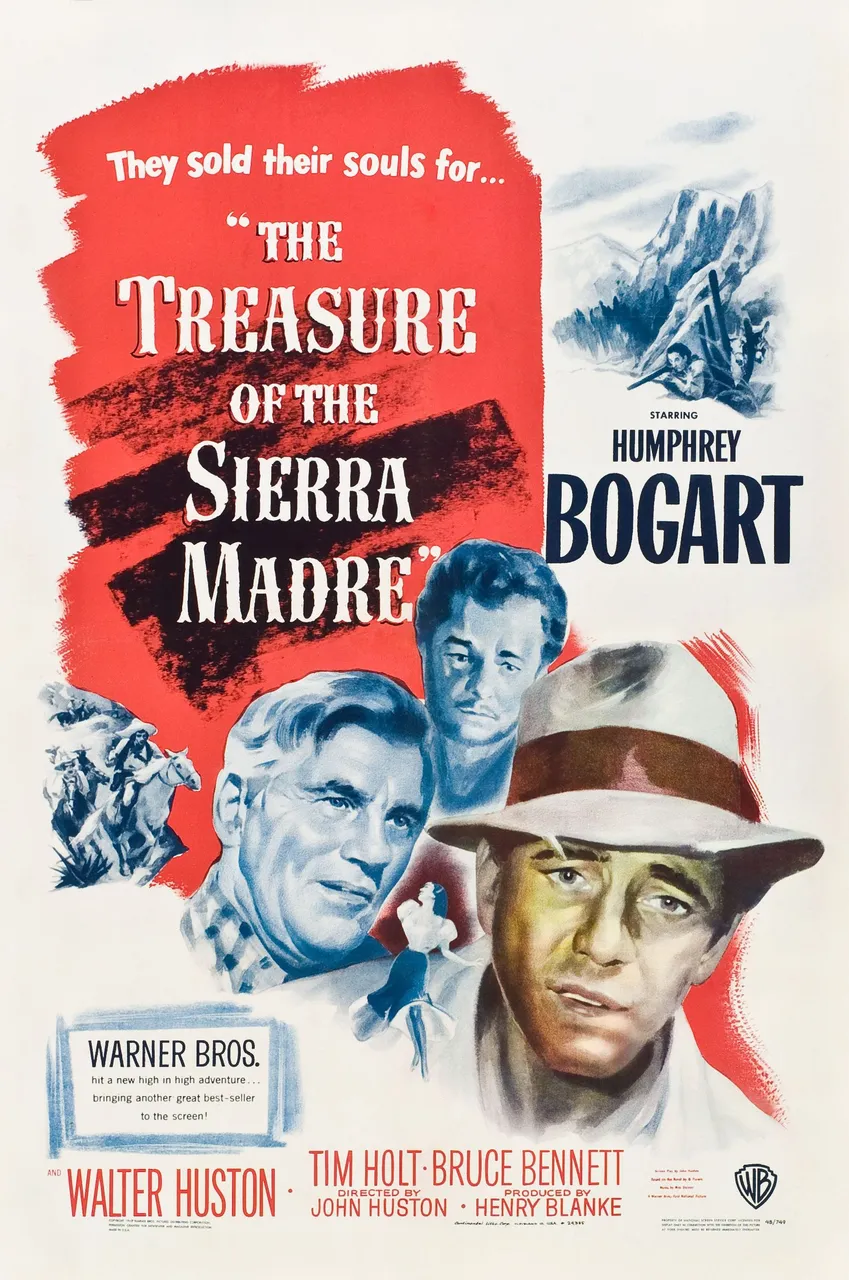
The Treasure of the Sierra Madre is a 1948 American Western film written and directed by John Huston. It is based on B. Traven's 1927 novel of the same name and is set in 1920s Mexico. The story follows two down-on-their-luck Americans, Dobbs and Curtin, who convince an old prospector to help them mine for gold in the Sierra Madre Mountains. The film explores the degenerative effects of greed, distrust, and hatred on the characters as they search for gold, and it is known for its darkly humorous morality tale, with Humphrey Bogart, Walter Huston, and Tim Holt in the lead roles.
Plot
The plot of The Treasure of the Sierra Madre (1948) revolves around two down-on-their-luck Americans, Dobbs and Curtin, who, while searching for work in 1920s Mexico, convince an old prospector, Howard, to help them mine for gold in the Sierra Madre Mountains. They eventually find a promising gold mine and agree to split it equally. However, as they struggle with the degenerative effects of greed, distrust, and paranoia, their partnership becomes strained. The film is known for its exploration of the moral consequences of greed and the human psyche when faced with the allure of wealth. The ending is described as an unhappy and ironic twist against the characters' dreams, making it a darkly humorous morality tale.
Trailer
https://inleo.io/threads/view/taskmaster4450le/re-leothreads-2zccs7kew
Cast
- Humphrey Bogart as Dobbs
- Walter Huston as Curtin
- Tim Holt as Howard
- Bruce Bennett as MacClane
- Ted D. McCord as Jones
- Owen Marks as Smith
writer: B. Traven, John Huston
Box office Gross: $5,014,000
Distributor: Warner Bros. Pictures, MGM/UA Home Entertainment Inc.
Genre: Adventure, Western, Drama
Release Date (Theaters): Jan 6, 1948
Release Date (Streaming): May 8, 2015
Themes & Reception
The Treasure of the Sierra Madre explores themes such as human nature, greed, corruption, and the consequences of wealth. The film shows how the pursuit of wealth can corrupt people and lead to distrust, paranoia, and violence.
The film was well-received by critics and audiences alike and is considered a classic of American cinema. It was nominated for four Academy Awards and won three, including Best Director for John Huston and Best Supporting Actor for Walter Huston.
Challenges faced
The production of the film faced several challenges, including filming on location in Mexico, where the cast and crew had to deal with extreme weather conditions and illness. Additionally, the film's budget was limited, and the studio was initially hesitant to cast Humphrey Bogart in the lead role.
Settings & visual styles
The film is set in 1920s Mexico and features stunning landscapes of the Sierra Madre Mountains. The visual style of the film is characterized by its use of deep shadows and chiaroscuro lighting, which creates a sense of foreboding and tension.
Techniques
Director John Huston used several techniques to create a sense of realism and authenticity in the film. For example, he filmed on location in Mexico and used non-professional actors to play the Mexican characters. He also encouraged improvisation and allowed the actors to develop their characters' dialogue.
Trivia & fun facts
- The film was based on B. Traven's 1927 novel of the same name.
- John Huston's father, Walter Huston, won an Academy Award for his role in the film.
- The film's famous line, "Badges? We ain't got no badges. We don't need no badges. I don't have to show you any stinking badges!" has become a pop culture reference and has been parodied in several films and TV shows.
- The film was added to the National Film Registry in 1990 for being "culturally, historically, or aesthetically significant"
General:
Page by @iskafan